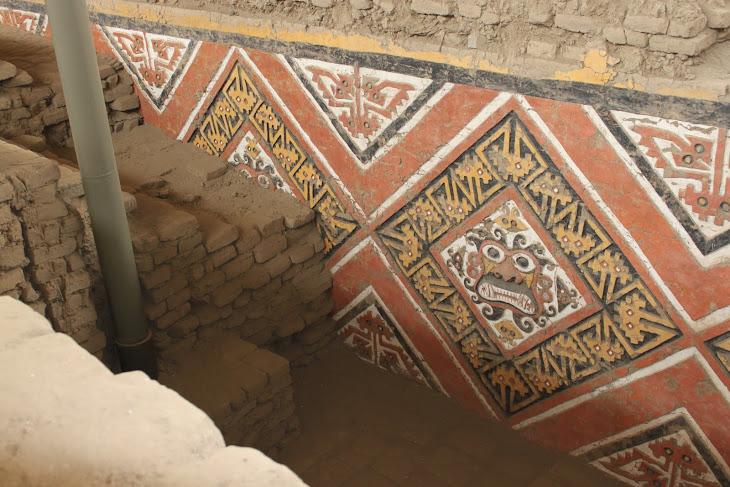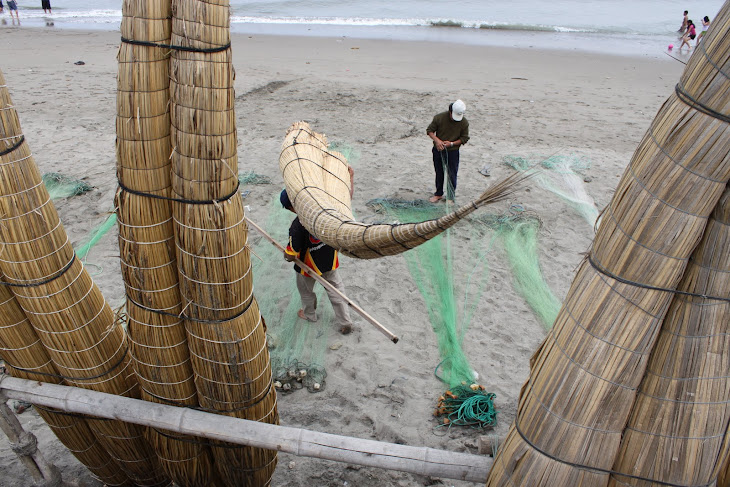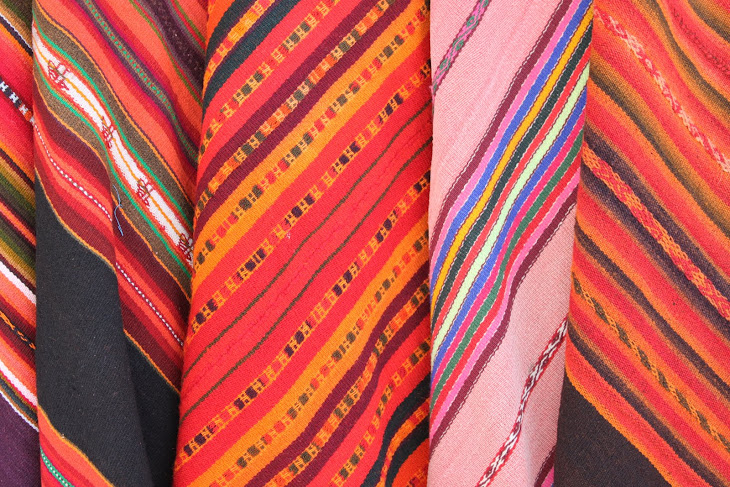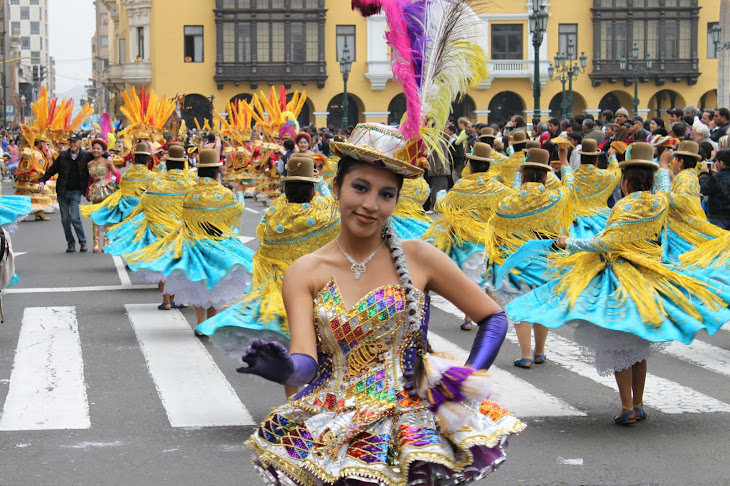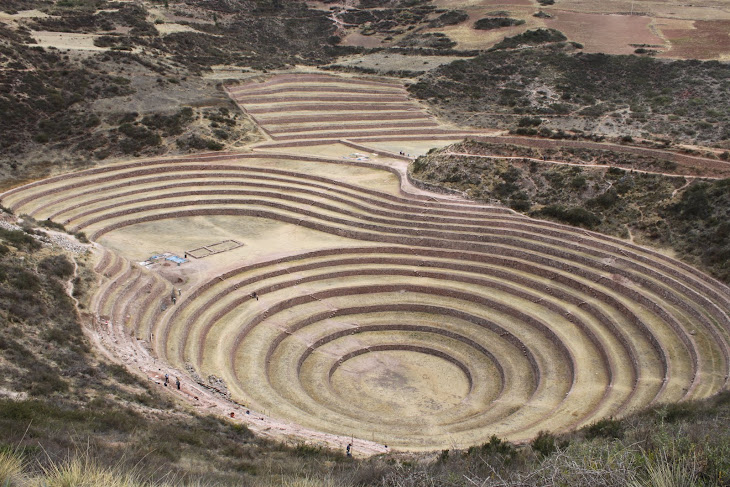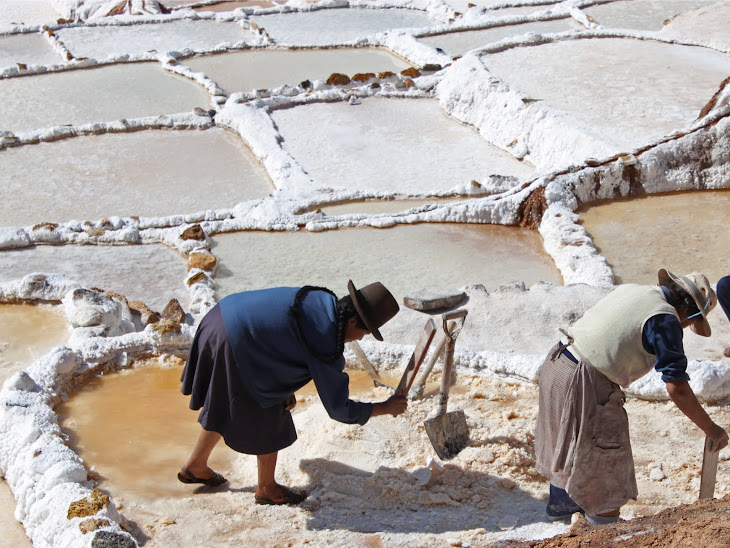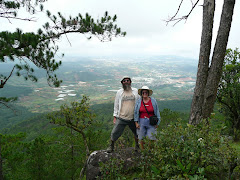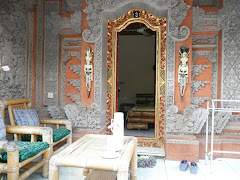Friday, October 30, 2009
Living . . . on . . . island . . . time
Slap our wrists, we've been lolling around on our third island in a row doing mostly nothing. Well, eating, sleeping and strolling the beach, but the strolling part has only been here in the Cook Islands. Before that we luxed out on Moorea, the second main island (after Tahiti) in French Polynesia. On Moorea, we substituted watching the fish instead of the strolling. And there were lots of ways to see fish . . . best of all was the glass window in the floor of our overwater bungalow. Even if we weren't hunched over it staring into the coral, we would just make sure to glance at it as we passed by on the way to the deck or pool or bar. Basically, we lived above a tropical fish aquarium for four days. There were many tiny fish -- iridescent blue, yellow and black stripes, white and black stripes, and something we called saddlebacks because of the weird blob of colour on their mid-back. Bigger yet were the big blue parrot fish up to two feet long that would occasionally cruise by. I once saw something that looked like a red and black spotted snake, but it was gone real quick. We still haven't got the hang of the French Polynesian language. Barely know hello. The problem is the vowels . . . there are too many and they say every one For an example, the capital city (Papeete) has four syllables and the airport (Faaa) has three syllables. But everyone speaks a form of English and are all extremely friendly so there are no problems. We did manage to go for one walk on Moorea and met a woman outside her souvenir black pearl shop. After less than five minutes of conversation about her family, she offered us the use of her car, ideas on what to see nearby and where to buy a three-pack of really fresh, juicy pineapples. The Cook Islands is in many ways similar with the same tropical volcanic reef fringed with coconut palms and the same outrageous prices. At least here in the Cooks we're in a simple self-catering unit so we don't have to eat in restaurants all the time. In Moorea, the restaurant main courses were $30 to $45 so Karen's first bit of home-cooking in two months is a welcome respite from the price shock every time we got a bill. Besides, she missed the cooking and the meals are a lot simpler with less creamy sauces. Another pleasant aspect of life here in the Cooks is the chance to meet a sympatico bunch of Aussies and Kiwis all staying in the same group of bungalows on the beach. Every evening we get together for a few hours to drink and gab before the mosquitoes chase us inside for dinner (our dinner, not the mosquitoes). We don't really see the sunsets because of the orientation of our beach but the sunrises are spectacular. We got up so early yesterday for the sunrise that we put in a five-hour walk before noon. Good thing too, it was bloody hot by then and we had to drink several buckets of water back at the bungalow. If all goes well here at the Internet cafe, we hope to get caught up with our picture posting. Pricey though, $2 for the first 10 minutes. Gah. Can't imagine posting again from the Cooks so our next contact will likely be from Auckland after we fly on Guy Fawkes Day, Nov. 5.
Saturday, October 17, 2009
Tuna, Moai and squishy boots
We leave Easter Island late tomorrow but most shops (including Internet) are closed on Sunday so this is our last shot before Tahiti where it is too expensive to do anything but breathe. Easter Island just barely tops Machu Picchu in the cool factor. It is quite a memorable place to drive, hike or just sit and watch the waves behind a Moai (you know, the big statues with the red hats). Our favourite part was the full day we spent driving around the coast, stopping every 5 kilometres or so to crawl out and wander around a bit of parkland surrounding another amazing archeological site. Even the increasingly heavy rain could not stop us from getting out and ogling the statues, platforms and stone rings. This morning was our first real bit of sunshine, so we took two cameras and two water bottles and hiked for two hours up a west coast trail where there is no road, mostly because of the millions of lava rocks scattered across the countryside. Several times the trail crossed lava tubes or more sizable pyrochlastic flows (guessing on the spelling). We had set a two-hour limit on our hike because we had to come back and figured it would be during the hottest part of the day. Wrong. The rain came back and we slogged our way home along a dirt trail of a road that included several places where we had to ford across the orange stream of rushing rainwater crisscrossing the track. We squished home completely soaked and our hiking boots are drying on the verandah of our guesthouse, unless the rain picks up again while we are out for dinner. We did not bring the camera with us for our afternoon beer so it will be awhile before we can post a Moai picture. Loved the tuna sandwiches here - a slab of fish bigger than a paperback book, about an inch thick and cooked fresh on the grill. Ummmm, dinner beckons. Probably more tuna.
Tuesday, October 13, 2009
Chile: wine surrounded by mountains
We did mainland Chile in two hits: three days in Santiago followed by six days in Santa Cruz. Both were about the right duration for two people travelling without a car. You should double the time if you've got a car and can wander about the countryside. The central part of Santiago is reasonable for exploring on foot, though the distances are a bit long. We spent one day climbing a mountain (okay, it's a hill) in the centre of the city. There were spectacular views of the sprawling city of 5 million people, surrounded by snow-capped mountains, followed by a funicular back down to the drinking and dining neighbourhood. We loved the logo for the Escudo brand of beer ... "more beer" ... because it's cheap at $2.50 a litre. No subtlety there. Our other days in Santiago were also filled with hiking, eating and drinking, although we stuck to level ground. The city has one astonishing museum absolutely loaded with pre-Columbian art. Before visiting Peru, we had no previous knowledge of most of those cultures and now we have a stronger sense of the sophistication of the pre-Columbian (even pre-Incan) peoples of this continent. After the big city, we jumped on a bus to Santa Cruz where we enjoyed the opportunity to take another break in a laid-back small town (not a surf town this time). This was a wine town. Some days we took a taxi to the outlying vineyards. Other days we just wandered the streets until we ran out of streets. Finally got a beautiful sunset shot from the edge of town toward the snow-capped mountains on our last day. After the food extravaganza of Peru, where every level of dining was quite special, the Chilean food is quite stratified with fabulous fine dining at the top end and particularly boring hotdogs and sandwiches at the low end. Much as we enjoyed the food and atmosphere in South America, we'll be happy not to mangle Spanish anymore. Our bags remain packed after our return bus to Santiago and we should go to bed as we have an early flight tomorrow to Easter Island. Strange thing about our bags: they keep growing more loosely packed even though we haven't used up much of our necessities other than a small bit of toothpaste and a handful of pills from Karen's naturopathic pharmacopia (sorry, tired of pidgin English, just had to use a few big words). PLEASE NOTE, the previous post is also from today.
Small points about Peru (a week old)
Getting back on track with a few funny or weird things about Peru.
* Taxis and buses -- Every single time one passes by, the driver toots to see if you are interested. One tooted at us while we were in a restaurant. When we settled in the small fishing village of Huanchaco for two weeks, the same taxis passed us several times a day and tooted every time. Stop it. Now.
* Adobe -- Peru's key archeological sites are badly decaying, centuries-old mud brick pyramids. It's a photographer's nightmare, except for a few fragments of coloured wall.
* Surfing in Huanchaco -- The only place we've ever seen where surfers ride parallel to the beach, then get out and hike back to catch the next wave. The best rides were at least a kilometre long.
* Balloon tit and ass man -- This was one of the strangest marketing gimmicks we've seen. He was selling candy on the beach.
* Starch -- Most meals had three: rice, potatoes and yucca, which resembles a potato, but is not related.
* Potatoes -- Dozens of varieties were in the markets. With such variety, Peruvians are able to perfect various cooking styles, including mashed and french fries.
* Chicha -- Often translated as purple corn beer. When we finally got around to asking if it contained any alcohol the answer was "not ours" so I suspect some versions did contain alcohol. It would explain the slurring. Every batch tasted different. If the chicha wasn't loaded with cinnamon and cloves, it tasted a bit like purple grape juice.
* Scallops -- I've eaten scallops for decades but only recently discovered what the shellfish actually looks like (the Shell Oil logo). I was dumbfounded when I dug a scallop (still attached to the shell) out of my seafood pasta. Did I mention that the seafood is shockingly good in Peru?
* Chicken -- The first time we saw chicken priced for whole, half, quarter or eighth, we laughed. An eighth of a chicken? After neither one of us could finish our quarter chicken, we quit laughing. The chickens in Peru must be huge.
* Blogging etiquette -- We were a bit surprised when our hostess thanked us for calling her hotel the best in town. We didn't remember writing that. So this is a reminder to ourselves to be careful what we say. And I'm going to go back and edit that post to insert the name of the hotel (Club Colonial in Huanchaco, Chile).
Enough about Peru. On to Chile.
* Taxis and buses -- Every single time one passes by, the driver toots to see if you are interested. One tooted at us while we were in a restaurant. When we settled in the small fishing village of Huanchaco for two weeks, the same taxis passed us several times a day and tooted every time. Stop it. Now.
* Adobe -- Peru's key archeological sites are badly decaying, centuries-old mud brick pyramids. It's a photographer's nightmare, except for a few fragments of coloured wall.
* Surfing in Huanchaco -- The only place we've ever seen where surfers ride parallel to the beach, then get out and hike back to catch the next wave. The best rides were at least a kilometre long.
* Balloon tit and ass man -- This was one of the strangest marketing gimmicks we've seen. He was selling candy on the beach.
* Starch -- Most meals had three: rice, potatoes and yucca, which resembles a potato, but is not related.
* Potatoes -- Dozens of varieties were in the markets. With such variety, Peruvians are able to perfect various cooking styles, including mashed and french fries.
* Chicha -- Often translated as purple corn beer. When we finally got around to asking if it contained any alcohol the answer was "not ours" so I suspect some versions did contain alcohol. It would explain the slurring. Every batch tasted different. If the chicha wasn't loaded with cinnamon and cloves, it tasted a bit like purple grape juice.
* Scallops -- I've eaten scallops for decades but only recently discovered what the shellfish actually looks like (the Shell Oil logo). I was dumbfounded when I dug a scallop (still attached to the shell) out of my seafood pasta. Did I mention that the seafood is shockingly good in Peru?
* Chicken -- The first time we saw chicken priced for whole, half, quarter or eighth, we laughed. An eighth of a chicken? After neither one of us could finish our quarter chicken, we quit laughing. The chickens in Peru must be huge.
* Blogging etiquette -- We were a bit surprised when our hostess thanked us for calling her hotel the best in town. We didn't remember writing that. So this is a reminder to ourselves to be careful what we say. And I'm going to go back and edit that post to insert the name of the hotel (Club Colonial in Huanchaco, Chile).
Enough about Peru. On to Chile.
Monday, October 5, 2009
Grieving
Please imagine a thick black border around this post. We arrived in Santiago, Chile, last night only to learn of the death of a dear friend back home. R.I.P. Bill Mainprize, 51. We had planned a collection of weird and funny moments from our month in Peru, but do not feel capable of delivering light and bright at the moment. Maybe after a few days of grieving.
Subscribe to:
Posts (Atom)
